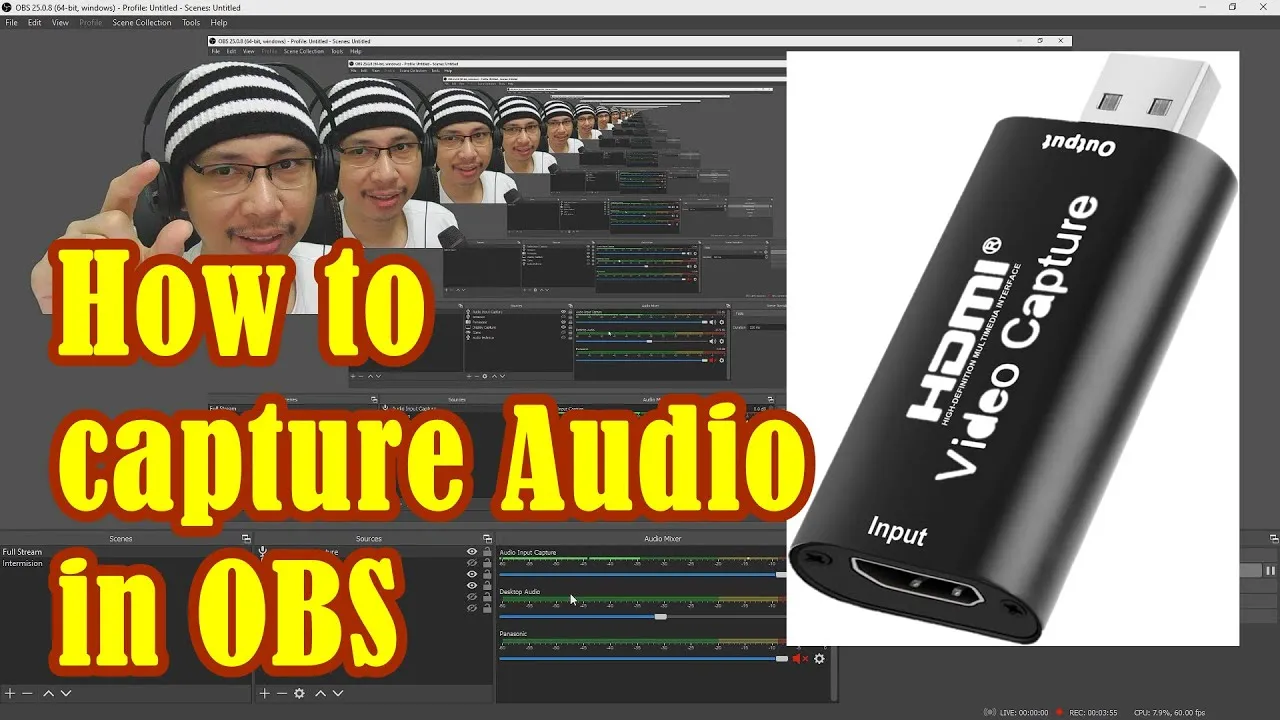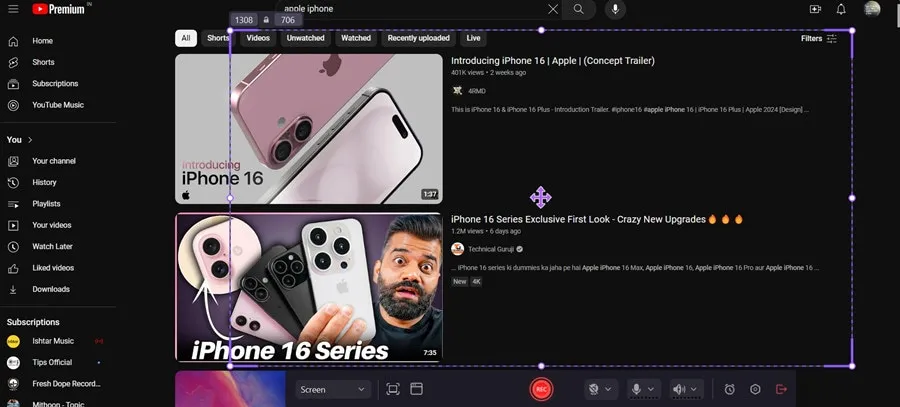Capturing audio from YouTube videos can be incredibly useful, whether you're looking to save a catchy song, an inspiring speech, or a tutorial for offline listening. However, it's essential to navigate this process carefully, keeping legality and ethics in mind. In the sections to follow, we'll explore various methods to extract audio from YouTube while also discussing the considerations you should keep in mind to respect the rights of content creators.
Understanding YouTube's Terms of Service

Before diving into ways to capture audio from YouTube videos, it’s crucial to understand the platform’s Terms of Service (ToS). YouTube's ToS is designed to protect the rights of creators and ensure that content is used appropriately.
Here are a few key points to keep in mind:
- Content Ownership: YouTube videos are typically protected by copyright, meaning the creators own the rights to their content. Downloading or extracting audio without permission can infringe these rights.
- Personal Use vs. Distribution: While you may be able to capture audio for personal use, distributing that audio without the creator's consent can lead to legal issues.
- Exceptions and Fair Use: Some cases may fall under fair use, such as for educational purposes or commentary, but these situations are often complex and context-dependent.
- Third-Party Tools: Many tools and websites that allow audio extraction may violate YouTube's ToS, which could lead to account termination or legal repercussions.
In summary, while it might be tempting to capture audio from YouTube videos, it’s essential to approach this with a clear understanding of the legal landscape. Always consider seeking permission from the content creator or using audio that is explicitly marked as free to use.
Also Read This: Behance project views increase tutorial
Method 1: Using Online Audio Extractors

If you’re looking for a quick and hassle-free way to capture audio from YouTube videos, online audio extractors are your best friends! These web-based tools allow you to convert your favorite video content into audio files without the need to install any software. Here’s how to get started:
- Select an Online Extractor: Websites like YTMP3 or Online Video Converter offer user-friendly interfaces.
- Copy the Video URL: Navigate to the YouTube video you want to extract audio from, and copy the URL from your browser’s address bar.
- Paste the URL: Go to the chosen extractor site and paste the copied URL into the designated field.
- Choose Audio Format: Many extractors let you select audio formats like MP3 or M4A. Pick one that suits your needs.
- Click to Convert: Hit the convert button and wait a few moments for the process to complete.
- Download the File: Once the conversion is done, you’ll see a download link. Click it to save the audio file to your device.
This method is straightforward but beware of potential ads or pop-ups. Always ensure you are using a reputable site to avoid security risks!
Also Read This: Canva Image Slicing
Method 2: Using Software Applications
If you’re looking for more control over your audio extraction process, using dedicated software applications might be the way to go. Programs like 4K Video Downloader and Audacity can provide you with enhanced features and better quality audio. Let’s break it down:
| Software | Key Features | Platform |
|---|---|---|
| 4K Video Downloader | Easy download of audio, supports playlists, and high-quality extraction. | Windows, Mac, Linux |
| Audacity | Advanced editing, noise reduction, and multi-track support. | Windows, Mac, Linux |
To use these applications:
- Download and Install: Get the software from its official website and follow the installation prompts.
- Import the Video: For 4K Video Downloader, paste the YouTube link directly. Audacity requires you to record or import the audio from the video.
- Edit if Necessary: Use Audacity to edit your audio, add effects, or clean up background noise.
- Export Your Audio: Choose the format you want and export the finished audio file to your device.
Using software applications can be a bit more technical, but they often yield better results and give you a wealth of options for customization!
Also Read This: A Través de Mi Ventana PelÃcula Completa en Español en YouTube
Method 3: Browser Extensions
When it comes to capturing audio from YouTube videos, browser extensions are a hassle-free and efficient option. They integrate directly into your web browser, allowing you to extract audio without needing to leave the site or download separate software. Here are some popular browser extensions you might consider:
- Video DownloadHelper: This extension supports a variety of video and audio formats. It can easily save audio from YouTube, enabling you to choose the quality you want.
- Audio Capture: An extension designed specifically for audio, it captures sound from web pages, including YouTube. It’s user-friendly and straightforward.
- YouTube MP3 Converter: This tool allows you to convert any YouTube video into an MP3 file directly from your browser.
To use these extensions, simply install them from your browser's extension store. Once installed, you'll often see a small icon in your toolbar. When you play a YouTube video, clicking this icon can give you options to download or extract the audio. Make sure to check the permissions the extension requires, as some may need access to your browsing activity.
In summary, browser extensions offer a quick way to capture audio without complicated steps. Just a click or two, and you have your favorite tunes ready for offline listening!
Also Read This: Navigating Rights Management Options on Imago Images
Method 4: Downloading Videos for Audio Extraction
If you prefer a more traditional method, downloading YouTube videos to extract audio can be highly effective. This method involves saving the video file on your device and using audio extraction software to convert it into a format you can use. Here’s how you can go about it:
- Choose a Video Downloader: There are several tools like 4K Video Downloader and YTD Video Downloader that allow you to download videos from YouTube seamlessly. Just copy the video URL, paste it into the downloader, and select the quality.
- Extracting Audio: Once downloaded, you can use software such as Audacity or VLC Media Player to extract audio. In Audacity, for example, you can simply import the video file and export it as an audio file.
- Convert to Desired Format: Ensure you choose a format that suits your needs, whether it’s MP3 for music or WAV for higher quality.
It’s important to note that while downloading videos for personal use is generally acceptable, sharing copyrighted content without permission can lead to legal issues. Always respect copyright laws and the rights of content creators.
In conclusion, downloading videos for audio extraction gives you control over the quality and format of the audio you want, making it a solid choice for audiophiles and casual listeners alike!
Also Read This: How Much Can You Make from Videos on Getty Images
7. Quality Considerations When Extracting Audio
When it comes to capturing audio from YouTube videos, quality is key. Poor audio can ruin your listening experience, especially if you're using the audio for a podcast, background music, or study material. Here are some crucial factors to keep in mind:
- Source Quality: The quality of the original video is vital. If the video is poorly recorded, the audio extraction will also be of low quality. Aim for videos that are uploaded in higher resolutions, like 1080p or 4K.
- Format and Bitrate: When extracting audio, choose formats that maintain high fidelity. Formats like MP3, WAV, or FLAC are popular. MP3 is convenient for size, but FLAC is lossless and offers the best sound quality.
- Noise and Artifacts: Pay attention to background noise and audio artifacts. Tools that offer noise reduction can greatly enhance your audio quality. Look for software that provides audio enhancement features.
- Sample Rate: The sample rate can affect audio clarity. A standard sample rate of 44.1 kHz is sufficient for most uses, but consider going higher (like 48 kHz) for professional applications.
In summary, to ensure you capture the best audio possible from YouTube, focus on the source quality, choose the right format, and utilize tools that enhance audio. Quality matters, and taking these considerations into account will make a significant difference in your final product.
8. Conclusion
Capturing audio from YouTube videos can be a straightforward process if you know the right methods and tools to use. Whether you're looking to create a podcast, extract music, or save lectures for studying, having the right approach can make all the difference.
Remember, always prioritize quality over convenience. It’s easy to grab audio quickly, but if it sounds terrible, it defeats the purpose. By considering the factors discussed, such as source quality and format, you can ensure the sound you extract is crisp and clear.
Ultimately, the goal is to enhance your listening experience, whether for personal enjoyment or educational purposes. So, equip yourself with the right tools, follow the guidelines, and enjoy the process of capturing and utilizing audio from your favorite YouTube videos!